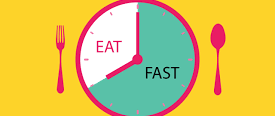The Ultimate Guide to Intermittent Fasting
Explore the ultimate guide to intermittent fasting. Uncover essential tips, health benefits, and strategies to maximize your fasting experience and achieve your goals.
NUTRITION AND DIET
1/23/20253 min read


The Ultimate Guide to Intermittent Fasting
Introduction
Welcome to the ultimate guide to intermittent fasting! If you're curious about this popular health trend, you're in the right place. Intermittent fasting (IF) isn't just a diet; it's a lifestyle change that can help you achieve your health goals, whether that's weight loss, improved metabolism, or better overall well-being. In this guide, we'll break down the different methods of intermittent fasting, help you choose the right one for your lifestyle, and provide tips on how to ease into fasting. Let's get started!
What is Intermittent Fasting?
Intermittent fasting is an eating pattern that cycles between periods of fasting and eating. Unlike traditional diets that focus on what to eat, IF focuses on when to eat. This approach can help your body burn fat more effectively and improve various aspects of your health.
Popular Methods of Intermittent Fasting
The 16/8 Method: This is one of the most popular IF methods. It involves fasting for 16 hours and eating during an 8-hour window. For example, you might eat between 12 PM and 8 PM and fast from 8 PM to 12 PM the next day.
The 5:2 Diet: With this method, you eat normally for five days of the week and restrict your calorie intake to 500-600 calories on the other two days. These fasting days should be non-consecutive, such as Monday and Thursday.
Eat-Stop-Eat: This method involves fasting for 24 hours once or twice a week. For instance, you might fast from dinner one day to dinner the next day.
Alternate-Day Fasting: As the name suggests, you alternate between days of normal eating and days of fasting. On fasting days, you typically consume about 500 calories.
The Warrior Diet: This method involves eating small amounts of raw fruits and vegetables during the day and having one large meal at night, typically within a 4-hour eating window.
Choosing the Right Method for You
Choosing the right intermittent fasting method depends on your lifestyle, preferences, and health goals. Here are some tips to help you decide:
Consider Your Schedule: If you have a busy schedule, the 16/8 method might be the easiest to incorporate. It allows you to skip breakfast and eat lunch and dinner within an 8-hour window.
Evaluate Your Eating Habits: If you prefer eating smaller meals throughout the day, the Warrior Diet might be a good fit. If you can handle longer fasting periods, you might try the Eat-Stop-Eat method.
Listen to Your Body: Pay attention to how your body responds to fasting. If you feel overly fatigued or unwell, it might be best to try a different method or consult with a healthcare professional.
Tips for Easing into Intermittent Fasting
Starting intermittent fasting can be challenging, but these tips can help you ease into it:
Start Slowly: Begin with a shorter fasting period, such as 12 hours, and gradually increase it as your body adjusts.
Stay Hydrated: Drink plenty of water during fasting periods to stay hydrated and help curb hunger.
Eat Nutrient-Dense Foods: Focus on eating whole, nutrient-dense foods during your eating windows to ensure you're getting the necessary vitamins and minerals.
Avoid Overeating: It's tempting to overeat during your eating window, but try to stick to balanced meals to avoid feeling sluggish.
Be Patient: It takes time for your body to adjust to a new eating pattern. Be patient with yourself and give your body time to adapt.
What to Expect During the First Few Weeks
The first few weeks of intermittent fasting can be an adjustment period. Here's what you might experience:
Hunger Pangs: It's normal to feel hungry during fasting periods, especially in the beginning. Drinking water, herbal tea, or black coffee can help manage hunger.
Energy Levels: You might experience fluctuations in energy levels as your body adapts to the new eating pattern. This should stabilize after a few weeks.
Mental Clarity: Many people report improved mental clarity and focus once they adjust to intermittent fasting.
Weight Loss: If weight loss is your goal, you might start to see changes within the first few weeks. Remember, consistency is key.
Conclusion
Intermittent fasting can be a powerful tool for improving your health and achieving your wellness goals. By choosing the right method for your lifestyle and easing into the practice, you can make intermittent fasting a sustainable part of your routine. Remember to listen to your body and consult with a healthcare professional if you have any concerns. Happy fasting!
